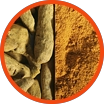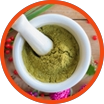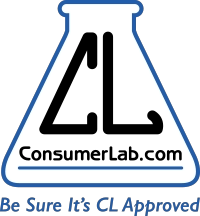ApresFlèx® Boswellia Serrata Studies
-
+
This study finds significant improvement in joint relief and functional ability by day 5 of taking AprèsFlex, with benefits that continue to increase throughout the 30-day period. Subjects taking AprèsFlex saw 49% more comfort, compared to placebo.
-
- Discomfort (5 items): during walking, using stairs, in bed, sitting or lying, and standing
- Stiffness (2 items): after first waking and later in the day
- Physical Function (17 items): stair use, rising from sitting, standing, bending, walking, getting in / out of a car, shopping, putting on / taking off socks, rising from bed, lying in bed, getting in / out of bath, sitting, getting on / off toilet, heavy household duties, light household duties
- ApresFlèx
- Placebo
- 60
- 50
- 40
- 30
- 20
- 10
- 0
A 2011 study tested the effects of AprèsFlex® in the management of clinical symptoms for sore, stiff knees. The randomized, double-blind, placebo-controlled study involved 60 subjects between 40 and 80 years of age that had been suffering from symptoms of mild to moderate discomfort for more than 3 months. Sixty subjects consumed either 100 mg of AprèsFlex® per day or placebo for 30 days.
To measure the effectiveness of AprèsFlex® for joint discomfort, researchers used validated, quantitative measurements including the WOMAC Index, Lequesne’s Functional Index and visual analog scale to assess discomfort, stiffness and physical function. All three tests were administered at baseline, as well as at days 5, 15 and 30. As described above, the WOMAC Index is a tri-dimensional self-administered questionnaire to assess joint discomfort, stiffness and physical function that consists of 24 items divided into 3 subscales:
The study also separately measured functional ability and discomfort using the Lequesne’s Functional Index (LFI), a widespread international instrument recommended by the World Health Organization (WHO) for outcome measurement in troubled knees. It consists of three sections 1) Discomfort; 2) maximum distance walked; and 3) activities of daily living that is calculated on an index 1 – 24 with 0 being none and >14 being extremely severe. A VAS (visual analog scale) rating scale (0-10) was used for discomfort ratings, which provides a scale for the subjective assessment of discomfort intensity.
Of the 60 subjects recruited in the study, only one was lost in the placebo group due to unavailability for follow-up evaluations, and no serious adverse events were reported.
Overall study results revealed significant reductions in VAS and LFI (discomfort score and functional ability) over placebo by Day 5. AprèsFlex® supplementation showed 14.8% and 16.3% better reduction in VAS and LFI scores respectively over placebo by the 5th day. There was significant reduction in each of the discomfort scores in the AprèsFlex® group by Day 30 when compared to placebo. In comparison with placebo, AprèsFlex® conferred a 37.6% reduction in VAS (discomfort), 32% reduction in LFI (discomfort and functional index), 40.1% reduction WOMAC discomfort, 41.3% reduction in WOMAC stiffness and 38.8% reduction in WOMAC function scores.
Scale Significant % Improvement in AprèsFlex® Group after 30 days as compared to Placebo Visual Analog Scale (VAS) 37.6% Discomfort Lequesne’s Functional Index (LFI) [discomfort and physical function] 32.0% WOMAC Discomfort 40.1% WOMAC Stiffness 41.3% WOMAC Function 38.8% This 30 day randomized, double-blind, placebo-controlled study of 60 adults suffering from a common joint ailment showed that AprèsFlex® is effective, resulting in significant reductions in joint discomfort and stiffness, and increases in physical function in multiple scales, with both clinical and statistically significant results in all areas. The study concluded that the data validates the efficacy of safety of AprèsFlex®, establishing the fast improvement in joint function and relieving discomfort in as early as 5 days of treatment.
Percent ImprovementCOMFORTMOBILITYVishal et al, A Double Blind, Randomized, Placebo Controlled Clinical Study Evaluates the Early Efficacy of Aflapin® in Subjects with […] of the Knee, 8 Int J Med Sci 615-622, no. 7 (2011).
**Note: Aflapin is an earlier name for the ingredient AprèsFlex.
-
+
This study shows fast, significant improvement with AprèsFlex in all discomfort, stiffness, and functional ability scores by day 7. The scores kept getting better with continued use, and after the full 90-day study, subjects reported an impressive reduction in joint soreness by 61%, compared to placebo.
-
- 12.8% reduction in VAS
- 9.17% reduction in LFI
- 11.78% reduction in WOMAC discomfort
- 18.48% reduction in WOMAC stiffness
- 10.24% reduction in WOMAC function
- ApresFlèx
- Placebo
- 70
- 60
- 50
- 40
- 30
- 20
- 10
- 0
A 2010 study also tested the effects of AprèsFlex® in the management of clinical symptoms for sore, stiff knees. The randomized, double-blind, placebo-controlled study involved 60 subjects between 40 and 80 years of age, suffering from symptoms of mild to moderate knee discomfort for more than 3 months. Sixty subjects consumed one of three regimens for 90 days: 100 mg of AprèsFlex® per day, 100 mg of 5-Loxin® per day (another Boswellia Serrata extract) or placebo.
To measure the effectiveness of AprèsFlex® for joint discomfort, researchers used validated, quantitative measurements including the WOMAC Index, Lequesne’s Functional Index and visual analog scale to assess soreness, stiffness and physical function. All three tests were administered at baseline, as well as at days 7, 30, 60 and 90.
The WOMAC Index is a tri-dimensional self-administered questionnaire to assess joint aches, stiffness and physical function that consists of 24 items divided into 3 subscales (see above for complete details). The study also measured functional ability and discomfort using the Lequesne’s Functional Index (LFI) (described above) that consists of three sections 1) Discomfort; 2) maximum distance walked; and 3) activities of daily living that is calculated on an index 1 – 24 with 0 being none and >14 being extremely severe. A VAS (visual analog scale) rating scale (0-10) was used for rating soreness, which provides a scale for the subjective assessment of discomfort intensity.
Of the 60 subjects recruited in the study, only three subjects (one from each group) were dropped due to their unavailability during the entire study period, and no serious adverse events were reported.
Overall study results revealed significant improvements in all discomfort, stiffness and functional ability scores after only 7 days. AprèsFlex® supplementation showed a statistically significant improvement in the following scores after only 7 days:
In comparison with the placebo group, AprèsFlex® conferred clinically and statistically significant improvements in discomfort scores between baseline and day 90 in all parameters tested. The AprèsFlex® group showed improvements by 47.3% in VAS, 35.8% in LFI, 61.7% in WOMAC discomfort, 60.1% in WOMAC stiffness and 49.4% in WOMAC functional ability.
Scale Significant % Improvement in AprèsFlex® Group after 90 days as compared to Placebo Visual Analog Scale (VAS) 47.3% Discomfort Lequesne’s Functional Index (LFI) [discomfort and physical function] 35.8% WOMAC Discomfort 61.7% WOMAC Stiffness 60.1% WOMAC Function 49.4% This 90 day randomized, double-blind, placebo-controlled study of 60 adults suffering from knee aches and stiffness showed that AprèsFlex® is effective, resulting in significant reduction in joint discomfort and stiffness, and increases in physical function as measured by multiple scales, with both clinical and statistically significant results in all areas. The study concluded that AprèsFlex® reduces soreness rapidly, in as early as 1 week of treatment.
Percent ImprovementCOMFORTMOBILITYSengupta, et al, Comparative Efficacy and Tolerability of 5-Loxin® and Aflapin® Against […] of the Knee: A Double Blind, Randomized, Placebo Controlled Clinical Study, 7 Int J Med Sci 366, no. 6 (2010).
**Note: Aflapin is an earlier name for the ingredient AprèsFlex.
UC-II® Collagen Studies
-
+
This study reveals UC-II is significantly more effective for improving joint discomfort, stiffness, and mobility when compared to placebo, as well as improving joint discomfort versus traditional glucosamine plus chondroitin.
-
- Patented Ingredient
- Glucosamine + Chondroitin
- 60
- 50
- 40
- 30
- 20
- 10
- 0
A 2009 study tested the effects of UC-II in treatment of a common knee condition as compared with a combination of glucosamine plus chondroitin. The randomized, double-blind, clinical study involved 52 subjects between 40 and 75 years of age that had been suffering from discomfort of the knee for more than 3 months. Fifty-two subjects consumed either 40 mg of UC-II® per day (containing 10mg of bioactive undenatured type II collagen) or a combination of 1,500mg/day of glucosamine and 1,200mg/day of chondroitin (G+C) for 90 days.
To measure the effectiveness of UC-II for joint discomfort, researchers used validated, quantitative measurements including the WOMAC Index, Lequesne’s Functional Index and visual analog scale to assess discomfort, stiffness and physical function. All three tests were administered at baseline, as well as at days 30, 60 and 90. As described above, the WOMAC Index is a tri-dimensional self-administered questionnaire to assess joint discomfort, stiffness and physical function that consists of 24 items divided into 3 subscales (see above for complete details).
The study also measured functional ability and soreness using the Lequesne’s Functional Index (LFI) (described above) that consists of three sections 1) Discomfort; 2) maximum distance walked; and 3) activities of daily living that is calculated on an index 1 – 24 with 0 being none and >14 being extremely severe. A VAS (visual analog scale) rating scale (0-10) was used for discomfort ratings, which provides a scale for the subjective assessment of discomfort intensity.
Overall study results revealed that UC-II was found to be more effective in reducing WOMAC scores by 33% as compared to 14% in the G+C treated groups after 90 days. Similar results were observed for VAS discomfort scores. Although both UC-II and G+C reduced VAS scores, UC-II was found to be more effective with a 40% decrease after 90 days compared to only 15.4% in the G+C treated group. The Lequesne’s functional index, used to determine how different treatments affect discomfort during daily activities, found a 20.1% reduction for UC-II as compared to only 5.9% in the G+C treated group.
Crowley et al, Safety and efficacy of undenatured type II collagen in the treatment of […] of the knee: a clinical trial, 6 Int J Med Sci 312-21, n. 6 (2009).
Percent ImprovementTotal WOMAC
(Discomfort, Stiffness & Physical Function)VAS
(Discomfort)Lequesne's Functional Index
(Discomfort & Function During Daily Activites)Other results of the study included significance in UC-II over G+C for: discomfort walking on a flat surface, difficulty walking on a flat surface, performing heavy domestic duties, and ascending stairs. VAS scores revealed that UC-II had a significant effect for discomfort during climbing up and down stairs, night soreness and resting discomfort. Total VAS discomfort scores were significantly reduced for UC-II at both Day 60 and Day 90 as compared to baseline.
This 90 day randomized, double-blind trial of 52 subjects suffering from joint discomfort showed that UC-II is effective, resulting in significant reduction in soreness during daily activities and is twice as effective as a combination of glucosamine plus chondroitin as measured by three independent quantitative analysis. The study concluded UC-II supplementation resulted in improvement in daily activities suggesting an improvement in overall quality of life in subjects receiving UC-II.
-
+
This study shows subjects taking UC-II reported significant reductions in joint aches and soreness, while improving range of motion, when compared to placebo.
-
A 2013 study was conducted to assess the efficacy and tolerability of UC-II in moderating joint function and joint discomfort due to strenuous exercise in healthy subjects. The randomized, double-blind, placebo-controlled study involved 55 subjects with an average age of 46 years old presenting with no knee joint soreness at rest and no diagnosable markers of developing knee conditions. The subject criteria excluded knee discomfort at rest and at least 3 of 6 clinical classification criteria, which included age greater than 50 years, morning stiffness in the joint lasting 30 minutes or less, crepitus on knee joint manipulation, body tenderness, bony enlargements, knee swelling or presence of excess fluid, and palpable warmth. Fifty-five subjects consumed either 40 mg of UC-II or placebo for 120 days.
To measure the effectiveness of UC-II for joint support, researchers used validated goniometry for knee extension / range of motion measurements. Subjects were instructed to sit in an upright position on a table edge with their backs straight (knee at 90 degrees). The axis of a goniometer was placed at the intersection of the thigh and shank at the knee joint. Subjects brought their knees to full extension without changing the position of the pelvis and lumbar spine. The extended knee joint angle was measured and recorded. Other methods included timed joint discomfort measurements. A stopwatch was started when subjects began climbing the stepmill. Time to onset of discomfort was recorded at the first sign of discomfort in the target knee. Percent change in time to complete recovery from discomfort was also recorded.
Overall study results revealed the UC-II supplemented subjects showed a statistically significant increase in the ability to extend the knee at day 120 as compared to the placebo group (81 degrees versus 74 degrees). The UC-II group also showed a significant increase in knee extension at day 90 compared to baseline (78.8 degrees versus 73.2 degrees). There was also a statistically significant net increase in knee extension at day 120 versus placebo (80 degrees versus 73.7 degrees). The placebo group experienced no statistically significant changes at any time during this study.
Supplementation with UC-II also resulted in statistically significant increases in the time to onset of initial joint discomfort at day 90 and at day 120. The time to complete recovery from knee joint soreness showed significant reductions at days 60, 90 and 120 compared to baseline for the UC-II group. The UC-II group exhibited average reductions in complete recovery time of 31.9% at day 60, 51.1% at day 90 and 51.9% at day 120. For the UC-II group it’s important to note that 21% of the subjects no longer reported any discomfort on the stepmill by day 120, whereas only 5% of the placebo group experienced this phenomenon. A binomial analysis revealed a statistically significant difference in complete loss of discomfort by day 120.
This 120 day randomized, double-blind, placebo-controlled study of 55 adults suffering from issues of joint soreness and function during exercise showed that UC-II is effective, resulting in significant reductions in joint discomfort and increased range of motion. The study concluded that daily supplementation with 40mg of UC-II supports joint function and flexibility in healthy subjects as demonstrated by greater knee extension and the potential to relieve joint discomfort.
Lugo et al, Undenatured type II collagen (UC-II®) for joint support: a randomized, double-blind, placebo-controlled study in healthy volunteers, 10 J Int’l Society of Sports Nutr 48 (2013).
-
+
This study compares UC-II vs. traditional glucosamine plus chondroitin in providing relief for those suffering from bad knees. Results clearly show UC-II is much more powerful and effective than a combination of 1,500mg of glucosamine and 1,200mg of chondroitin.
-
A study published in 2016 tested the effects of UC-II in treatment of sore, achy knee as compared with placebo, and a combination of glucosamine plus chondroitin. The randomized, double-blind, placebo-controlled study involved 191 subjects 40-75 years old presenting with moderate to severe knee soreness for at least 3 months. Subjects consumed either 40 mg of UC-II, a combination of 1,500mg/day of glucosamine and 1,200mg/day of chondroitin (G+C), or placebo for 180 days.
To measure the effectiveness of UC-II for joint discomfort, researchers used validated, quantitative measurements including the WOMAC Index, Lequesne’s Functional Index and visual analog scale to assess discomfort, stiffness and physical function. All three tests were administered at baseline, as well as at days 7, 30, 60, 90, 120, 150 and 180. As described above, the WOMAC Index is a tri-dimensional self-administered questionnaire to assess joint soreness, stiffness and physical function that consists of 24 items divided into 3 subscales (see above for complete details).
The study also measured functional ability and discomfort using the Lequesne’s Functional Index (LFI) (described above) that consists of three sections 1) Discomfort; 2) maximum distance walked; and 3) activities of daily living that is calculated on an index 1 – 24 with 0 being none and >14 being extremely severe. A VAS (visual analog scale) rating scale (0-10) was used for discomfort ratings, which provides a scale for the subjective assessment of discomfort intensity.
Overall study results revealed that UC-II had statistically significant changes in the total WOMAC score compared to placebo. At day 180 there were statistically significant reductions in all three WOMAC subscales compared to placebo including discomfort, stiffness and physical function. Other results of the study included a significant reduction in the LFI score for the UC-II group at day 180 versus placebo, and the significant decrease in mean VAS score at day 180 versus both placebo and G+C.
This 180 day randomized, double-blind trial of 191 subjects suffering from stiff, sore knees showed that UC-II is effective, resulting in significant reduction in discomfort during daily activities. The study concluded UC-II significant improved knee function compared to placebo and compared to G+C, and was well-tolerated.
Lugo et al, Efficacy and tolerability of an undenatured type II collagen supplement in modulating knee […] symptoms: a multicenter randomized, double-blind, placebo-controlled study, 15 Nutr J 14 (2016).
The clinical studies here tell a pretty convincing story:
- Significant joint relief can be felt in as little as 7 days with AprèsFlex.
- Improvements in mobility, flexibility, and joint relief all increase over time with continued use.
- No adverse reactions or negative effects were associated with these key ingredients.
You can keep reading about the results of these cutting-edge ingredients, or you can find out for yourself how well they work by trying Instaflex Advanced today!






